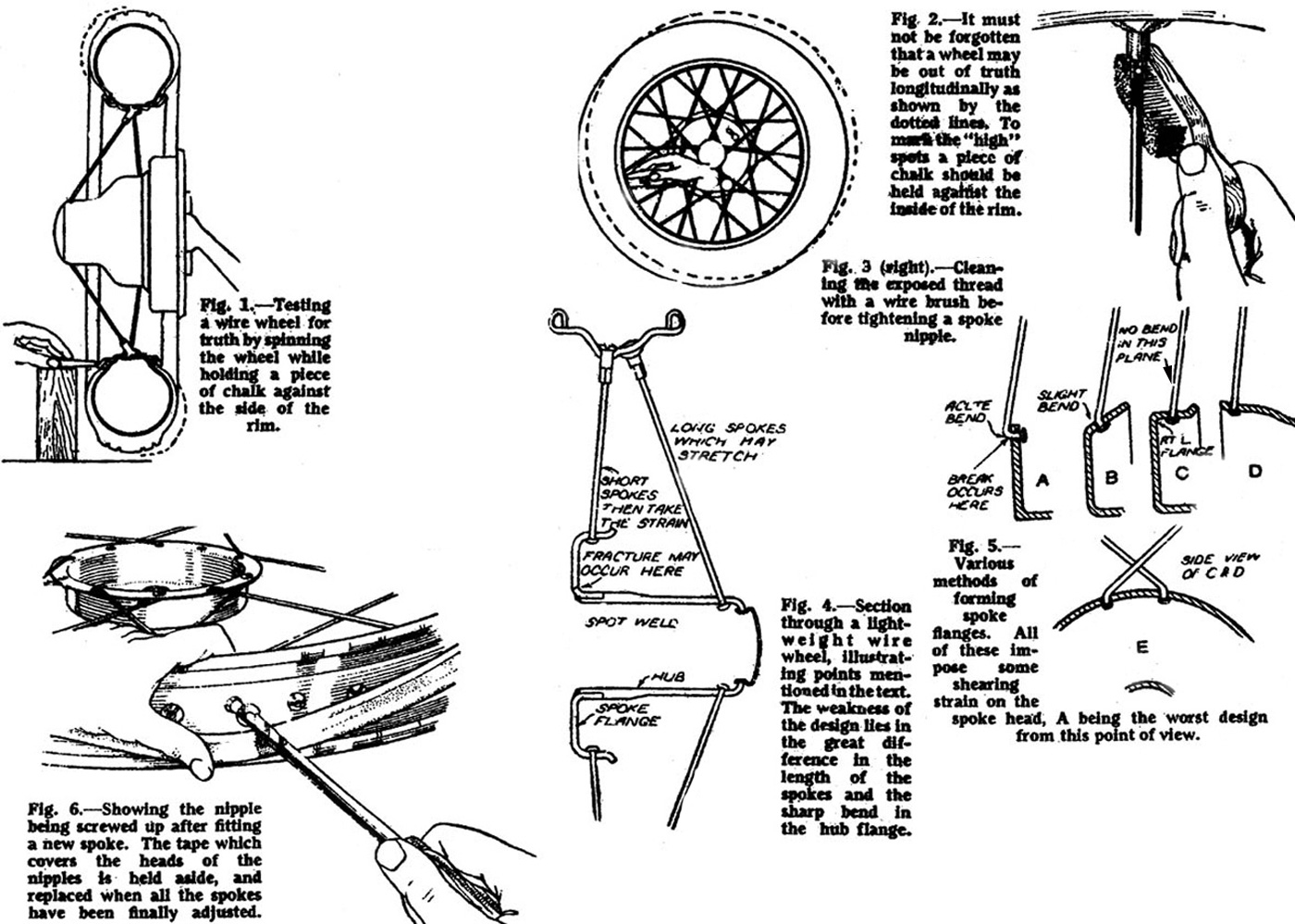
| I was once a BIG fan of private forums. However,
publicly searchable ones can spread a lot of damage through errant
information, especially if their discussion habits are separate posting
based rather than collegiate debate style. Each message separately
appears in a web search and that causes a lot of problems
unnecessarily. :( I was recently assured, by the forum owner,
a fine soul and mogger, that no one believes any advice
gleaned from an internet forum, but my Help Inbox suggests the opposite
to be true. From time to time, I point out what I believe are deep
mistakes to stop damage or distress to my fellow enthusiasts before it
happens. I add terms that will have this appear on a public search of
the relevant terms. There was recently a discussion on a forum called Talk Morgan, a good social place for British moggers on the subject of wire wheels. It is not noted by the cogniescente mechanical expertise or technical monitoring, but it does encourage friendships. During a recent discussion, which I took part in, it was stated there by two members, that wire wheels should not be tuned/trued (despite the obvious construction of the spokes made to do so) as the rim bands cannot be replaced. In the experience the many hands-on amateurs with wire wheels (bicycle and motorcycles) and professionals, that is not true (PUN!). Their views would mean that wire wheels will not be suitable for driving after (in my experience) after about 20k miles. This is less than the lifetime of the tyres! Untuned wire wheels will prejudice your car's comportment as the rims will become ever more faulty. |
| WATCHPOINT: If a professional is hired for a full restoration, distinct from merely tuning the spokes, the cost will be prohibitive. If a full restoration is wanted it is usually better to buy a new wheels, assuming an identical one is still available. If not you are looking at a new set of five (including the spare). However, these tasks can be done for a negligible cost by the owner. |
 are most often found in the outer section of the wheel.
are most often found in the outer section of the wheel.  Though one can often have the right spanner that will suit, there are spoke wrenchesfor
this job, available from a motorcycle or classic car wire wheel
seller. Many types. Just confirm that the one you buy fits your
nipples. You are not tightening the spokes, you actually tightening the
nipples, which is why there is no need to to make the mistake suggested
on Talk Morgan, of breaching the silicone seal and rim band to access
the interior spoke fitting. That is only done when replacing a
broken spoke. Even then, the rim bank can merely be psuhed aside
and returned, after the new spoke is fit, with a little extra silicone.
Though one can often have the right spanner that will suit, there are spoke wrenchesfor
this job, available from a motorcycle or classic car wire wheel
seller. Many types. Just confirm that the one you buy fits your
nipples. You are not tightening the spokes, you actually tightening the
nipples, which is why there is no need to to make the mistake suggested
on Talk Morgan, of breaching the silicone seal and rim band to access
the interior spoke fitting. That is only done when replacing a
broken spoke. Even then, the rim bank can merely be psuhed aside
and returned, after the new spoke is fit, with a little extra silicone.
| WATCHPOINT: The silicone seal over the internal spoke fittings (assuming you have them) they cover will often (at least for me) stay in place over the spokes you adjust, but they can also breach the seal. In such cases, one can reapply the silicone over those guilty spokes or, better still, remove all the silicone and the old rim band and replace them. |
| WATCHPOINT: The savings in properly caring for you wire wheels yourself have become enormous over the years, especially if you send the wheels off to an automobile wire wheel expert as they are often far from you, entailing massive shipping costs, there and back, for your precious rims. The total cost will often be near the costs of a new rim! Motorcycle or bicycle experts are an alternative, more often near at hand and can usually do the job just as well. The latter people will cost much less, but when doing it yourself the cost is negligible. |
| Webmaster: In my experience wire wheels need re-tuning after 20,000 miles and continue to get much worse after that. 1. The cure can be costless, as it was for Dennis and myself. It is a regular maintenance thing. 2. One can use local professionals in the spoked wheel milieu,whether that be cars, motorcycles or bicycles. 3. You can keep buying expensive new wire wheels very frequently. (sad shrug) 4. You can accept/tolerate the wheels as they deteriorate and the degraded ride that comes with that. |
